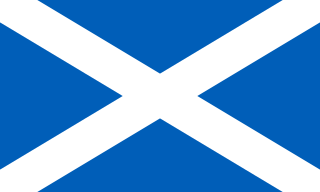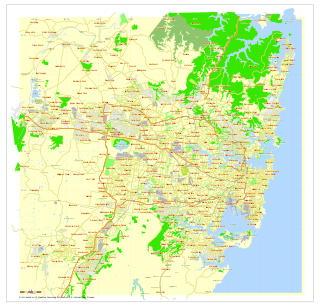
The Sydney Morning Herald (SMH) is a daily compact newspaper owned by Nine in Sydney, New South Wales, Australia. Founded in 1831 as the Sydney Herald, the SMH is the oldest continuously published newspaper in Australia and a national online news brand. The print version of the newspaper is published six days a week.

Kirribilli House is the secondary official residence of the Prime Minister of Australia. Located in Sydney, New South Wales, the house is at the far eastern end of Kirribilli Avenue in the harbourside suburb of Kirribilli. It is one of two official Prime Ministerial residences, the primary official residence being The Lodge in Canberra, Australian Capital Territory.
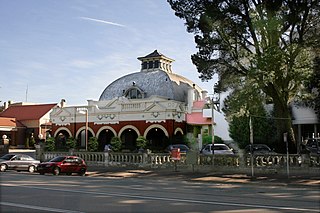
The Hydro Majestic Hotel is located in Medlow Bath, New South Wales, Australia. The hotel is located on a clifftop overlooking the Megalong Valley on the western side of the Great Western Highway.

Clifton Gardens is an urban locality in the suburb of Mosman in Sydney, New South Wales, Australia. Clifton Gardens is located in the local government area of the Municipality of Mosman and is part of the Lower North Shore.

Manly Council was a local government area on the northern beaches region of Sydney, New South Wales, Australia, first incorporated in 1877. On 12 May 2016, the Minister for Local Government announced that Manly Council would be subsumed into the newly formed Northern Beaches Council. The last Mayor of Manly Council was Cr. Jean Hay, a member of the Liberal Party.
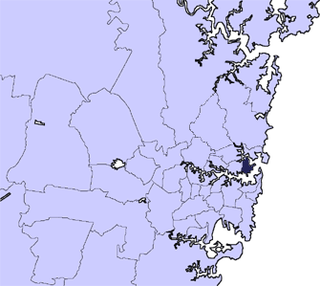
The Mosman Council is a local government area on the Lower North Shore of Sydney, New South Wales, Australia.

Milsons Point ferry wharf is located on the northern side of Sydney Harbour serving the Sydney suburb of Milsons Point. It is next to Luna Park and the Sydney Harbour Bridge. It is served by Sydney Ferries Parramatta River and Cross Harbour services operated by First Fleet and RiverCat class ferries.

Abercrombie House was built in Bathurst, New South Wales, Australia in the 1870s by the Stewart family who were Bathurst pioneers. William Stewart came to Australia from England in 1825 as part of the colonisation of the penal colony (Australia). William was the Lieutenant Governor General of New South Wales; which meant he was hypothetically 2nd in command to running Australia. William was given land in Bathurst as a reward for doing his job well. William Stewart's eldest son James built Abercrombie House. The house is considered to be of extreme historical significance. It is listed on the National Trust Register. It is also on the New South Wales Heritage Register and the Australian Heritage Database which describes it as "an outstanding example of Victorian Tudor style architecture. It is built of granite with sandstone dressing to the quoins and window surrounds, and there are two storeys together with an attic floor. The building's most striking feature is its array of curvilinear parapeted gables topped by iron finials." The 50-acre (200,000 m2) land and house is currently owned by the Rex Henry Morgan Family. Since 1969 the Morgan family has made major restorations to the house. The House is currently occupied by Christopher Morgan and his family.

The Rotunda is located in Balmoral Beach Reserve at Balmoral Beach, Sydney. It was built in 1930 as part of the beach improvement program undertaken by Mosman Council. Overlooking the bay and close to Rocky Point Island, it is set in a very picturesque area. After its completion it was a very popular venue for brass band concerts for many years throughout the 1930s and 1940s. Today it is used for festivals, events and weddings and is an important historical landmark in Balmoral.

Curlew Camp was an artists' camp established in the late 19th century on the eastern shore of Little Sirius Cove at Mosman in Sydney. It was home for some years to several leading Australian artists, such as Arthur Streeton and Tom Roberts of the Heidelberg School, and it was from here that some of their most famous paintings were created. Today the site is still in its natural state and the Mosman Council has built a foreshore walk called the "Curlew Camp Artist's Walk" which traces the journey that the residents of the camp followed when they disembarked from the ferry at Musgrave Street Wharf and returned to the camping site. The walk starts at South Mosman Wharf and continues along the harbour's edge for 1.6 km until it finishes at Taronga Zoo Wharf.

Olive Fitzhardinge (1881–1956) was an Australian rose breeder, the first to patent her work. Her four surviving roses are held in Australian collections. Her roses were well received in the 1930s but after the Second World War favoured styles of roses changed significantly.
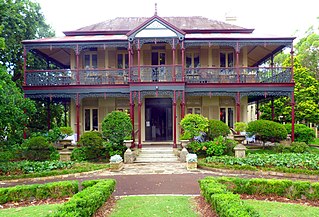
Boronia House is an heritage-listed former residence and now a high tea restaurant and function centre located at 624-632 Military Road, Mosman in the Mosman Council local government area of New South Wales, Australia. It was designed by Sheerin & Hennessy (1885) and Clive Lucas & Partners, and built during 1885. The property is owned by Mosman Council. The property is also called Boronia. It was added to the New South Wales State Heritage Register on 2 April 1999.

The Herald was an iron paddle steamer imported as frames from the United Kingdom and assembled in 1855 by Richard Johnson in Sydney Harbour, New South Wales, Australia, where she was registered. The Herald is one of the earliest iron paddle wheel steamers built in Australia, where she operated within Sydney Harbour. Initially used on the fledgling North Shore route between Dawes Point and Blues Point by the newly formed North Shore Steam Company, however due to not enough traffic to make her financially viable, she often performed tug duties. Eventually the North Shore Steam Company was wound up and the vessel put up for sale but continued picking up business wherever it was available, operating as a tug, ferry, excursion boat and cargo vessel

The Garrison Church is a heritage-listed active Anglican church building located at Argyle Street in the inner city Sydney suburb of Millers Point in the City of Sydney local government area of New South Wales, Australia. It was designed by Henry Ginn, Edmund Blacket and built from 1840 to 1846 by Edward Flood and George Patton. It is also known as Holy Trinity Anglican Church and Hall. The property is owned by Anglican Church Property Trust and was added to the New South Wales State Heritage Register on 2 April 1999.
Henry Austin Wilshire was an architect and was a prominent member of Sydney society in the late 19th century and early 20th century. Although he is not generally well known, he was an active and innovative architect, and a contributor to the community with interests in town planning and transport issues.

Redleaf in Double Bay, New South Wales is a building of historical significance and is listed on the State Heritage Register. It was built in 1863 as a private residence and was home to several notable people until 1940 when it was sold to the Municipality of Woollahra. Today it is the Woollahra Council Chambers.

Mark Foy (1865–1950) was a prominent businessman who established the shopping emporium called Mark Foy's in Sydney. He also opened the Hydro Majestic Hotel in the Blue Mountains as a hydropathic resort with Swiss doctors and spa water from Baden in Germany. In addition he was a keen sportsman with interests in rifle shooting, boxing, sailing and motor racing.
The Mosman Bay ferry service is a commuter ferry route in Sydney, New South Wales, Australia. Part of the Sydney Ferries network, it serves several Lower North Shore suburbs around Mosman Bay.

Egglemont is a heritage-listed residence at 11 Cranbrook Avenue, Cremorne, North Sydney Council, New South Wales, Australia. It was built from 1916 to 1918. It is also known as Esslemont. It was added to the New South Wales State Heritage Register on 2 April 1999.




